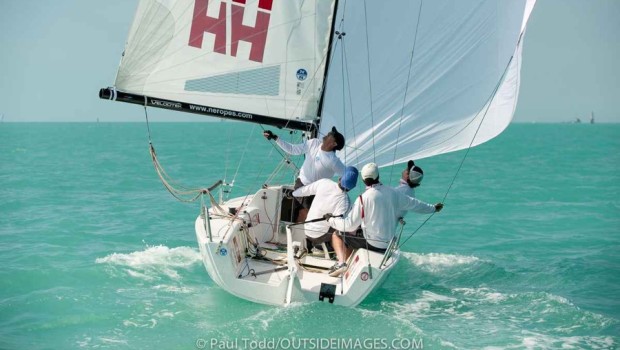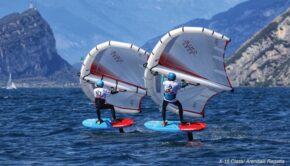Winging it in Key West
Published on January 18th, 2016
By Geoff Becker, Sailing World
In the right breeze and right situation a quick transition to wing-on-wing can open up a lane or get you down the mark without jibing. It’s effective, but not all the time. North Sails One Design expert Geoff Becker debriefs us on the wing-on-wing technique that’s made it way into the J/70 tactical playbook.
There’s a new trend in the J/70 class, with and more of the fleet sailing straight downwind, wing-on-wing, with the gennaker and mainsail on opposite sides of the boat. At first, the sight of these sportboats attempting to sail straight downwind seems counterintuitive, but many teams seemed to be making it work to their advantage. It’s not really a big surprise that there’s something to gain from sailing the straightest course to the mark while other boats sail traditionally higher sailing angles and longer courses.
While sailing in and watching the fleet at Davis Island earlier this winter, often 30 percent of the boats might be sailing wing-on-wing on a given downwind run, making the fleet appear more symmetric than asymmetric. This trend has resulted in many teams practicing and perfecting the specifics of the wing-on-wing sail handling and trim. However, even with the teams have it dialed, the question remains whether this unorthodox downwind mode really works and when it’s better to keep this mode in the bag.
Leading up to Key West Race Week, J/70 teams were busy fine-tuning rig tune, sail trim and boathandling, which includes adding the wing-on-wing downwind mode. We’ve practiced sailing wing-on-wing in different wind conditions and sea states and have determined the maneuver is something to be used sparingly. While it can provide an advantage in certain conditions and situations, when used at the wrong time it is easy to lose distance to other boats in the fleet.









 We’ll keep your information safe.
We’ll keep your information safe.